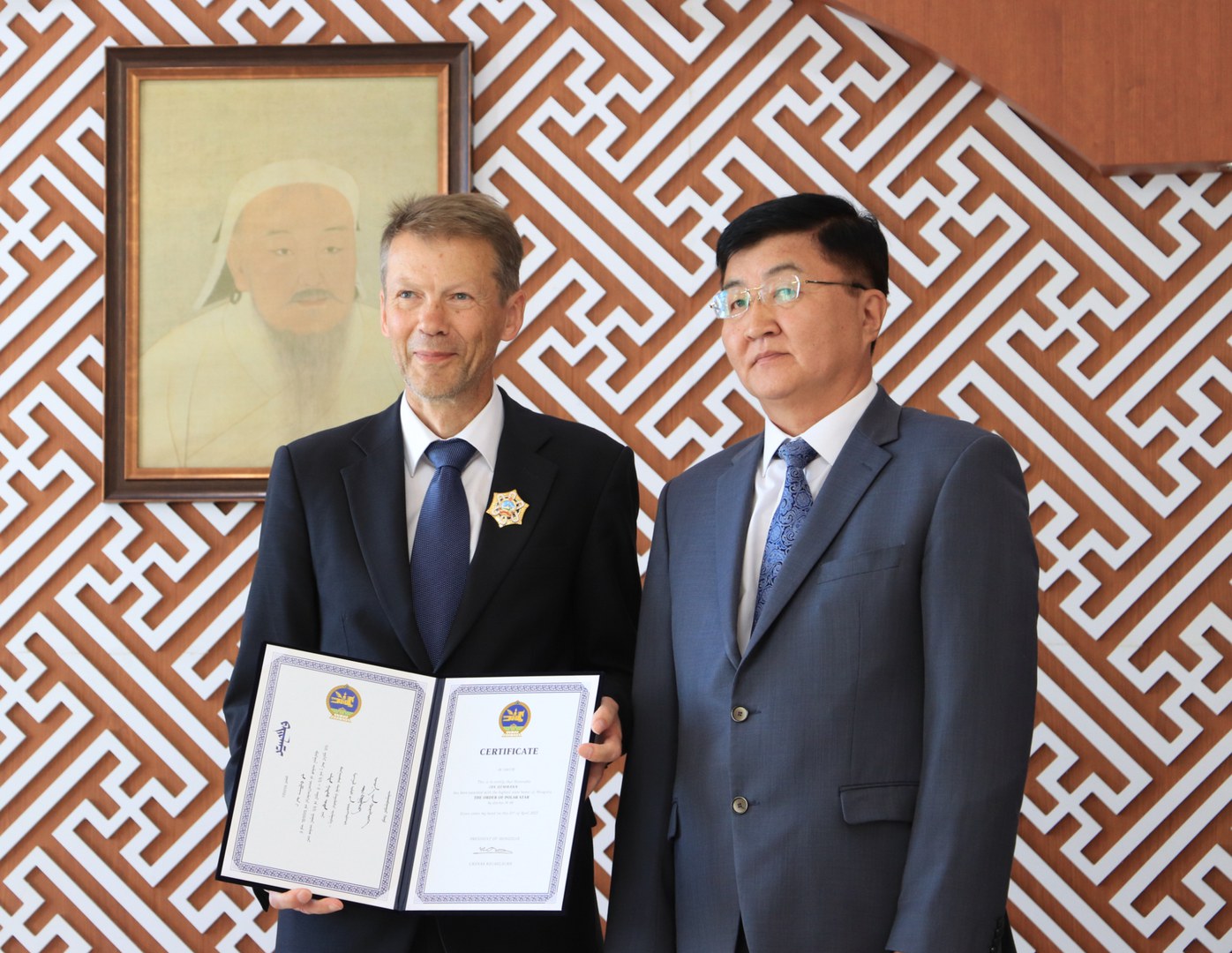Professor Jan Bemmann from the Department of Prehistoric and Early-Historic Archaeology at the University of Bonn and his colleague Susanne Reichert have been researching the foundation of cities in the Mongol Empire since 2007 and 2009 respectively. Both are currently in the East Asian country. Thanks to their extensive network of contacts among Mongolian researchers, their awards did not come as a complete surprise. “Our friends had warned us to bring something nice to wear,” Bemmann reveals. Alongside practical everyday clothes, therefore, both researchers had a suitable outfit to hand for their appointment at the ministry.
In Research Unit 5438, “Urban Impacts on the Mongolian Plateau – Entanglements of Economy, City, and Environment,” which is now being funded by the DFG, Jan Bemmann and Susanne Reichert are also studying how cities influenced the population’s supply of basic foodstuffs, energy and building materials in the global Mongol Empire of the 13th and 14th centuries. Another key element is the impact that city-building had on the environment at the time, such as deforestation and subsequent soil erosion.
The new project is focusing on the remains of two cities in present-day Mongolia that were founded from scratch by the descendants of Genghis Khan: Karakorum, the former capital of the Mongol Empire, and Khar Khul Khaany Balgas. They are symbolic of the Mongols’ dramatic shift from nomadic pastoralists to city-dwellers. The research unit plans to investigate both the two city complexes themselves and how they influenced the surrounding areas.
The funding covers a period of four years. “We’ll use the time for some intensive excavation work,” says Professor Bemmann, who is Speaker for the research unit and a member of the Bonn Center for Dependency and Slavery Studies (BCDSS) Cluster of Excellence at the University of Bonn. Jan Bemmann and Susanne Reichert, both of whom are members of the Present Pasts Transdisciplinary Research Area at the University of Bonn, will be making two annual visits to Mongolia in the coming years: around four to five weeks from mid-May followed by another stint from mid-August to late September. “Any later and you get the first snow,” Professor Bemmann says, explaining the time windows. The excavation campaign will then take a break until the following year.




